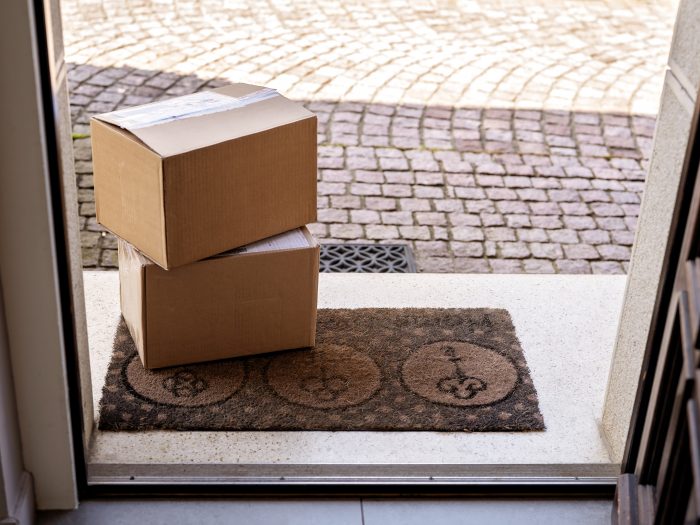Sponsored: Great American Insurance Group
3 Ways COVID-19 Accelerates E-Commerce and Creates New Environmental Exposures

Though its long-term effects remain unclear, there’s little doubt that the COVID-19 pandemic will change the world as we know it. Among its many potential impacts is the possibility that it will permanently alter the way we work and shop.
The “Amazon effect” is already in full force. Many brick-and-mortar stores have buckled under the pressure of e-commerce. Consumers have grown accustomed to the ease and convenience of online shopping and two-day delivery. Those trends were recently reinforced by stay-at-home orders, which leave shoppers little choice but to buy their necessary items online.
“I get my groceries delivered now. I never used to do that, but it’s the norm now,” said Barry Geisler, Divisional Senior Vice President & Chief Underwriting Officer, Great American Environmental. “Being confined to home is forcing people to find new ways to get the items that they need. And once they get used to that process and find it helpful, maybe even easier, they may continue to use those delivery services even after the lifting of social distancing restrictions.”
This shift ultimately will leave more spaces vacant and create opportunities to redevelop those locations into much-needed warehouses, distribution facilities, data centers and renewable energy sources to power it all. And that comes with environmental risk.
Here are three ways an accelerated “Amazon effect” will create new environmental exposures, and how the right insurer can help mitigate the risk.
1. Operational exposures emerge with redevelopment of retail spaces.

Barry Geisler, Divisional Senior Vice President & Chief Underwriting Officer, Great American Environmental
Speed is integral to the e-commerce revolution. To make good on promises of fast delivery, Amazon and other big retailers with online stores need large networks of distribution centers, close to where its customers live.
“To meet this need, there will be lots of opportunities to take previously contaminated sites, clean them and repurpose them,” Geisler said.
Old shopping malls and retail centers make perfect candidates, but redevelopments of large structures are anything but straightforward.
“There are a variety of different environmental exposures that are normally associated with redeveloping a shopping center. For example, if there was a department store that ran an automotive operation, there’s very likely petroleum hydrocarbon contamination. If there was a dry cleaner at the location, they very likely used chemicals that are known carcinogens. Older buildings may also have asbestos in the walls, lead in the paint or other hazardous building materials,” Geisler said.
Depending on the type of facility being developed, new operational exposures may be introduced. A warehouse that includes a cold storage facility, for example, may use chemicals to maintain the temperature that are hazardous in the event of a leak.
“There are a variety of operational exposures to consider going forward even after the site is repurposed into a warehouse or logistics center,” Geisler said.
2. Brownfields and landfills hold potential as renewable energy sites, but historical contamination poses a threat.
A key byproduct of e-commerce is data – and lots of it. Online retailers keep tabs on what customers search for and purchase, so that they can make product recommendations and target advertising more effectively. More data means an increased need for data centers, “which is going to increase the need for energy,” Geisler said.
“And given what we know about climate change, the ability to have clean, renewable energy sources will be very important. We will need to find ways to power the e-commerce revolution in a way that doesn’t further harm the environment,” he said.
Contaminated sites like brownfields and landfills make attractive locations for solar farms because they may not always be safely reused for other purposes. Converting these sites into renewable energy sources can help to meet climbing power needs without taking up other economically viable space or further damaging the surrounding environment.
But developing on contaminated land comes with risk.
Disturbing polluted soil or landfill waste could cause those pollutants to leak into groundwater or disperse through the air, posing a threat to public health. Extensive testing must be conducted so that all parties understand the level of contamination, and liability for the historical contamination must be clearly defined.
Developers who don’t do their due diligence on a potentially contaminated site could find themselves in serious legal and financial trouble should their actions cause further environmental damage.
3. Increased transportation of goods means greater likelihood of pollution events.
More warehouses, distribution centers and an increase in home deliveries ultimately mean more trucks on the road.
“All of these goods need to be moved from manufacturing locations to logistics centers, and then subsequently to warehouses and/or end users. That increases the likelihood of a pollution event,” Geisler said. “There will be more accidents, more spills of hazardous materials and nonhazardous materials, simply by virtue of the increased traffic that’s going to be necessary in order to move these materials.”
A carrier transporting household products like bleach or ammonia may see the environmental implications of a wreck. But many don’t realize that just about anything can be considered a pollutant under the right set of circumstances.
“There was an incident not too long ago where a company was transporting milk in a tanker truck. It flipped over, unfortunately, while on a bridge and spilled into a nearby creek. The milk, in this instance, was considered a pollutant because it caused harm to the fish and other wildlife,” Geisler said.
The trucking company initially filed a claim with its auto insurer, but typical auto policies do not cover pollution losses from transported cargo. Because the trucker did not realize the cargo what they were carrying could be considered hazardous, they had not procured a pollution policy, and therefore received no insurance recovery.
How Environmental Insurers Make the E-Commerce Revolution Safer
Environmental liability coverage offers critical protection for developers. landlords, facility operators and motor carriers who are navigating the risk associated with the ever-changing e-commerce revolution.
One way insurers help to mitigate the risk is by educating buyers and lenders about the potential exposures and liabilities associated with buying, developing and operating commercial real estate.
“We typically get involved in redevelopments to facilitate a sale from a current owner to a prospective buyer. We want to know what due diligence has been done. Have they sampled the soil and groundwater at the location? Have they performed a Phase 1 Environmental Site Assessment, which basically is a history of the operations conducted at the location?” Geisler said. “We want to get a full picture of how the site has been used so that we can accurately determine what the environmental exposures will be.”
The second part of the transaction puzzle is dividing environmental liabilities.
“We take an active look at the transaction documents to see how those liabilities are apportioned to structure a policy that best suits our prospective insured,” Geisler said.
Great American Environmental also covers the financial institutions that facilitate such transactions, who themselves may have liability for pollution events at the site by virtue of having loaned the money for the transaction and taking a security interest in the property as collateral.
The members of the management team at Great American’s Environmental Division have, on average more than 25 years of experience and the division’s senior underwriters have an average 15 years’ experience in the field. Additionally, many on the team have technical degrees and environmental consulting experience. Committed to service excellence, the underwriting teams work with their brokers and agents to uncover the hidden risks in their clients’ operations and develop a custom program to protect them. They work collaboratively with technical consultants and claims professionals to create comprehensive and cohesive solutions to complex environmental risks.
“We have a dedicated set of environmental engineers who we rely on to fully evaluate the environmental exposures, which means we can be more precise in our coverage,” Geisler said. “We don’t take a cookie cutter approach. We pride ourselves on being able to draft individual endorsements to our policy forms that fit the specific set of circumstances of a particular transaction.”
To learn more, visit GAIG.com/Environmental.
This article was produced by the R&I Brand Studio, a unit of the advertising department of Risk & Insurance, in collaboration with Great American Insurance Group. The editorial staff of Risk & Insurance had no role in its preparation.










